Agent-Based Models
Nick Malleson
Alison Heppenstall
School of Geography, University of Leeds, UK
These slides: http://surf.leeds.ac.uk/presentations.html
Outline
What are ABMs and why are they so popular?
What are they being used for?
Pro’s and con’s
Modelling crime
Predictive and dynamic modelling
Modelling behaviour
Challenges
Work we are involved in

Introduction to ABM
Aggregate v.s. Individual
'Traditional' modelling methods work at an aggregate level, from the top-down
E.g. Regression, spatial interaction modelling, location-allocation, etc.
Aggregate models work very well in some situations
Homogeneous individuals
Interactions not important
Very large systems (e.g. pressure-volume gas relationship)

Introduction to ABM
Aggregate v.s. Individual
But they miss some important things:
Low-level dynamics, i.e. “smoothing out” (Batty, 2005)
Interactions and emergence
Individual heterogeneity
Unsuitable for modelling complex systems
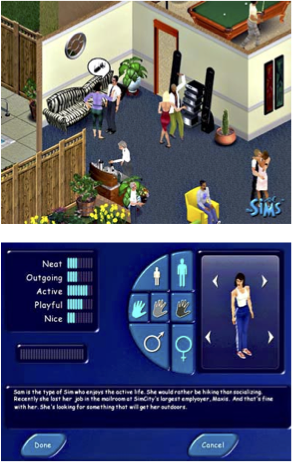
Introduction to ABM
Systems are driven by individuals
(cars, people, ants, trees, whatever)
Bottom-up modelling
An alternative approach to modelling
Rather than controlling from the top, try to represent the individuals
Account for system behaviour directly
Autonomous, interacting agents
Represent individuals or groups
Situated in a virtual environment

Attribution: JBrew (CC BY-SA 2.0).
Emergence
One of the main attractions for ABM
"The whole is greater than the sum of its parts." (Aristotle?)
Simple rules → complex outcomes
E.g. who plans the air-conditioning in termite mounds?
Possible to prove the with simple computer programs
Conways 'Game of Life'
Emergence
Why is it important?
Key message: Complex structures can emerge from simple rules
Emergence is hard to anticipate, and cannot be deduced from solely analysis of an individual's behaviour
Individual-level modelling is focused on understanding how macro-level patterns emerge from micro-level through the process of simulation.

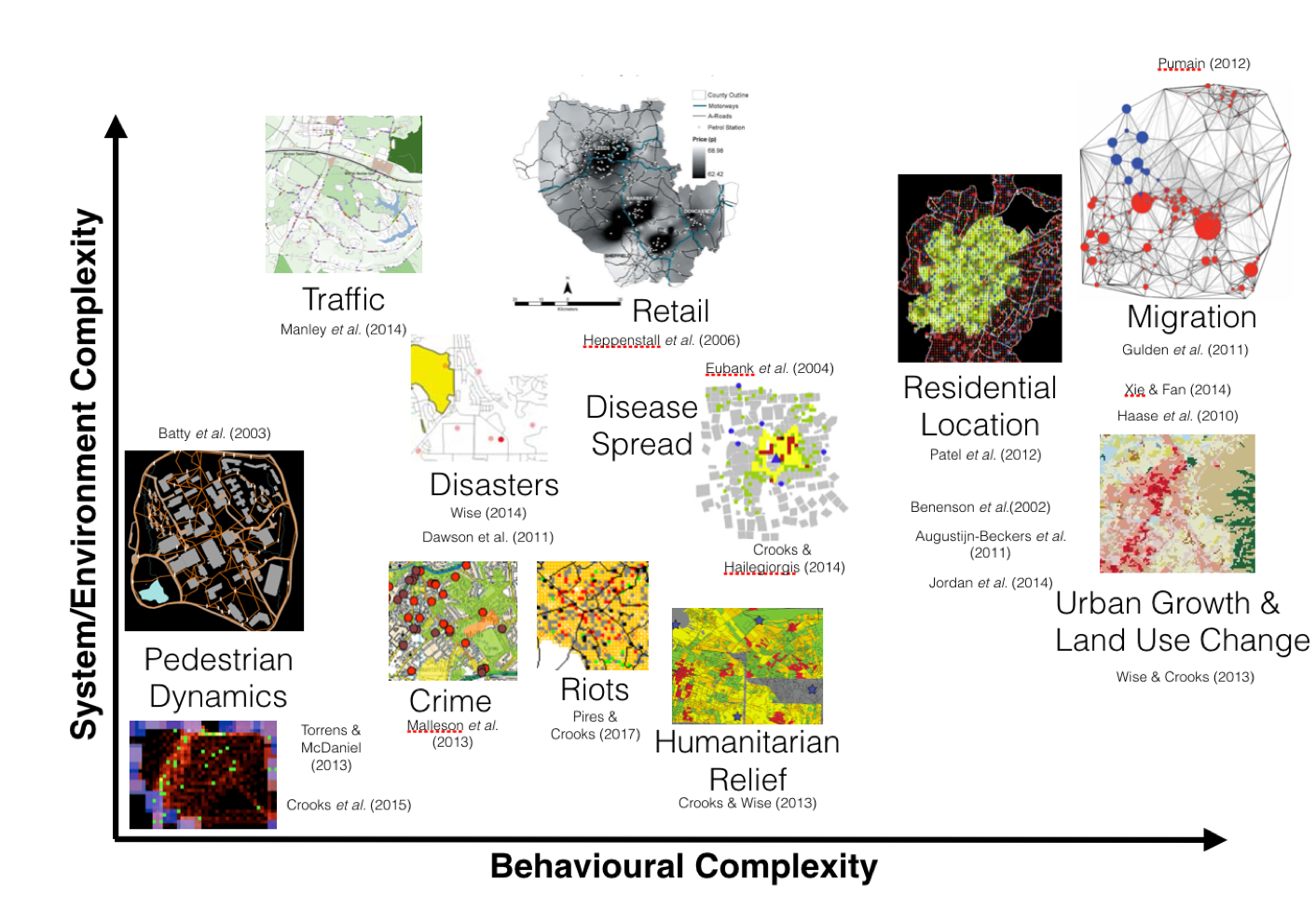
Agent-Based Modelling - Appeal
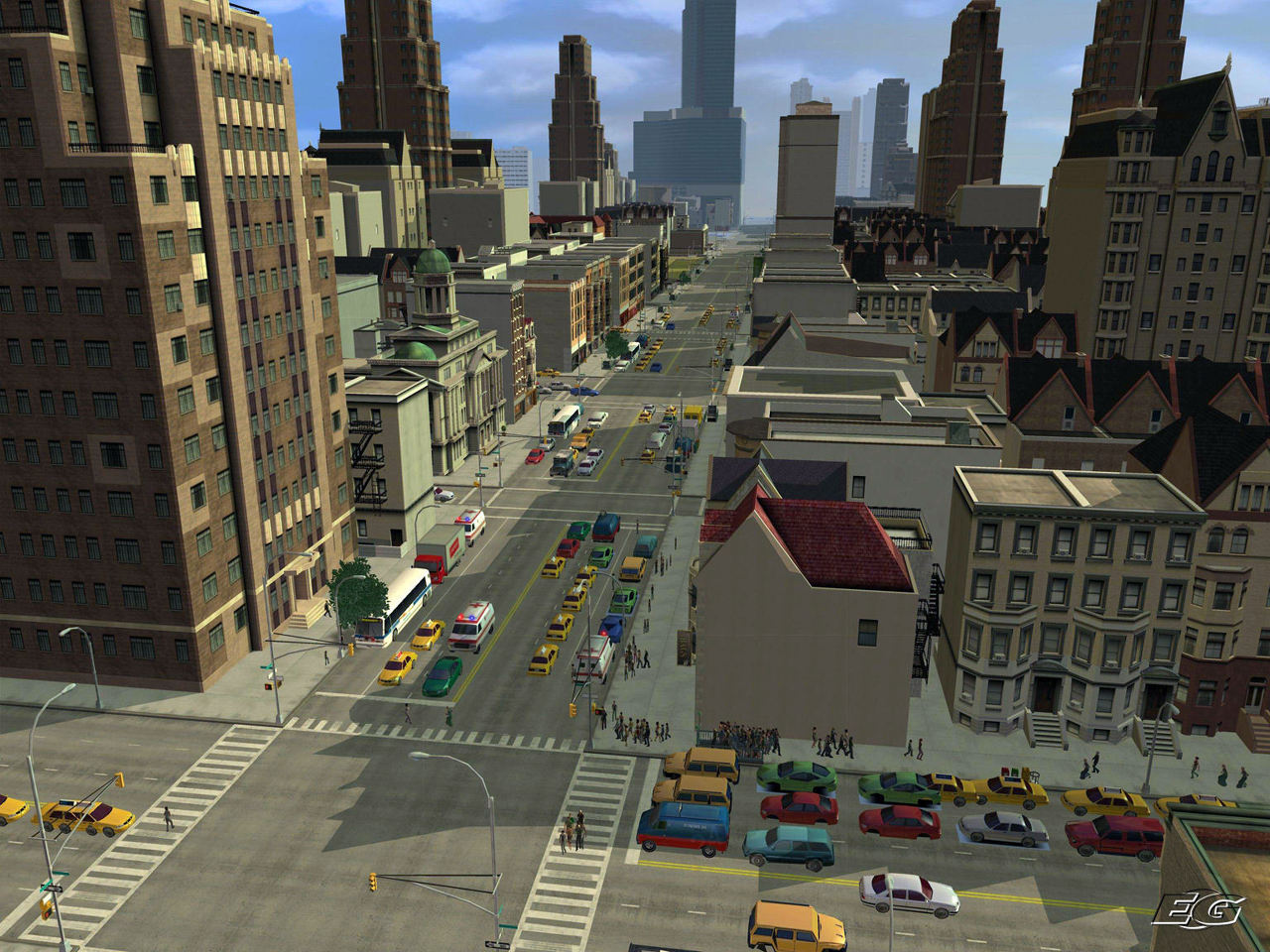
Modelling complexity, non-linearity, emergence
Natural description of a system
Bridge between verbal theories and mathematical models
Produces a history of the evolution of the system
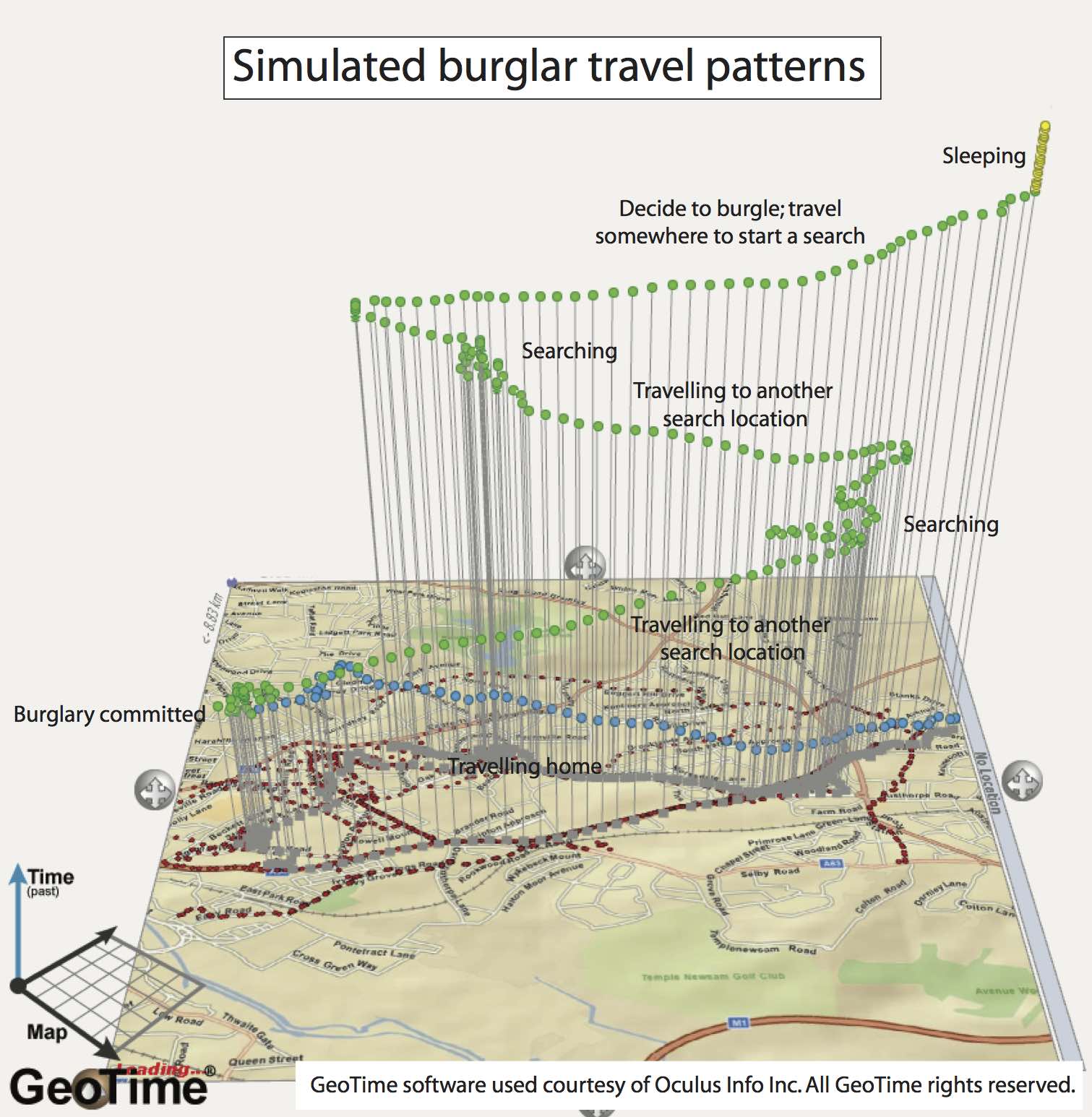
Agent-Based Modelling - Difficulties
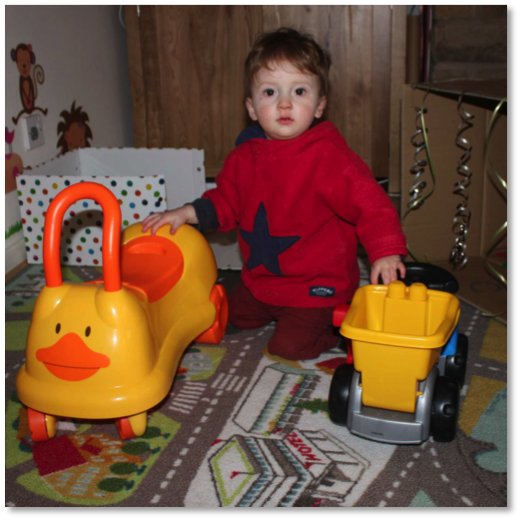
(actually he played with his trains...)
Tendency towards minimal behavioural complexity
Stochasticity
Computationally expensive (not amenable to optimisation)
Complicated agent decisions, lots of decisions, multiple model runs
Modelling "soft" human factors
Need detailed, high-resolution, individual-level data
Individual-level data
Creating an ABM
Create an urban (or other) environment in a computer model.
Stock it with buildings, roads, houses, etc.
Create individuals to represent offenders, victims, guardians.
Give them backgrounds and drivers.
See what happens.

Why Model Crime?
Exploring theory ('explanatory' models)
Simulation as a virtual laboratory.
Linking theory with crime patterns to test it.
Making predictions ('predictive' models)
Forecasting the impacts of social / environmental change.
Exploring aspects of current data patterns.
Why is it Difficult?
Extremely complex system:
Attributes of the environment (e.g. individual houses, pubs, etc.).
Personal characteristics of the potential offender and/or victim.
Features of the local community.
Physical layout of the neighbourhood.
Potential offender’s knowledge of the environment.
Traditional approaches often work at large scales, struggle to predict local effects
"Computationally convenient".
But cannot capture non-linear, complex systems.
Better Representations of Theory?
Environmental Criminology theories emphasise importance of
Individual behaviour (offenders, victims, guardians)
Individual geographical awareness
Environmental backcloth
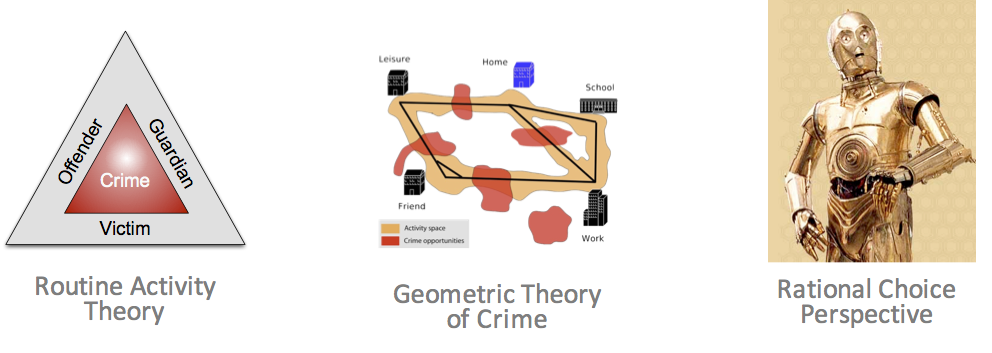
Better Representations of Space?
Lots of research points to importance of micro-level environment
Brantinghams' environmental backcloth
Crime at places research (e.g. Eck and Weisburd, 1995; Weisburd and Amram, 2014; Andresen et al., 2016)
An experiment:
Choose a number between 1 and 4 (inclusive)
Were you able to chose a number at random?
Or did most people choose the number 3?
Who else is doing this?
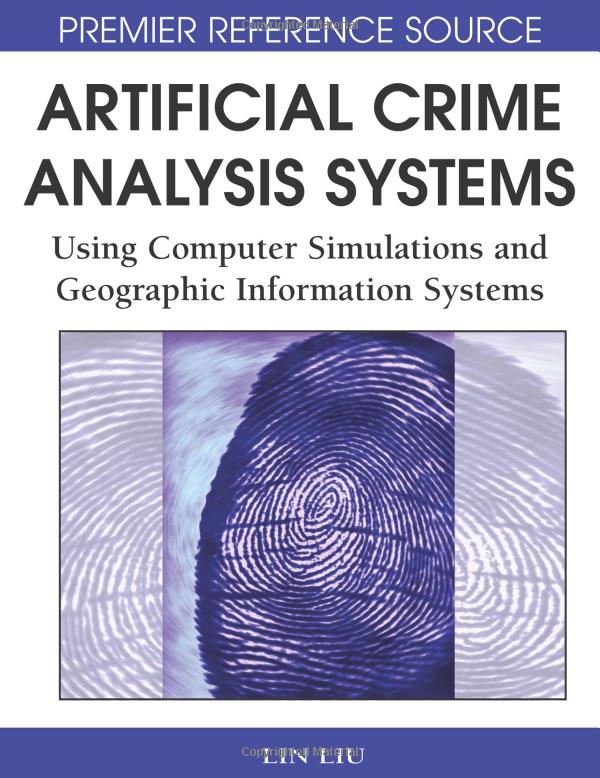
Small, but growing, literature
(apologies to the many who are missing!)
Birks et al. 2012, 2013;
Groff 2007a,b; Hayslett-McCall, 2008
Liu et al. (2005)
Me! (Malleson et. al ...)
A special issue of the Journal of Experimental Criminology entitled "Simulated Experiments in Criminology and Criminal Justice" (Groff and Mazerolle, 2008b)
ABM Explanatory Example (Birks 2012)
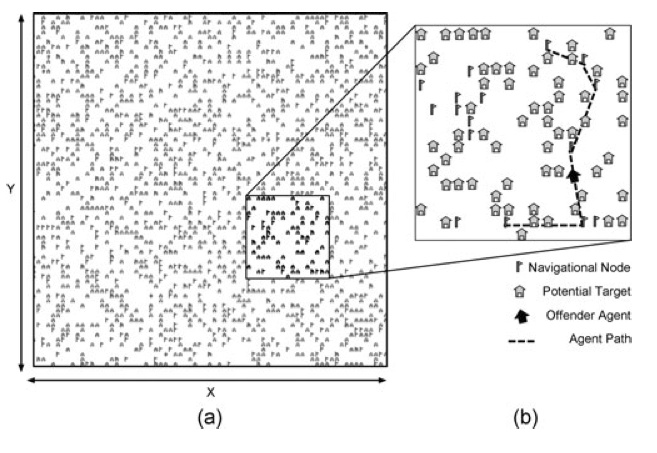
Explanatory: exploring theory
Randomly generated abstract environments
Navigation nodes (proxy for transport network)
Potential targets (houses)
ABM Explanatory Example (Birks 2012)
One type of agent: potential offenders
Behaviour is controlled by theoretical 'switches'
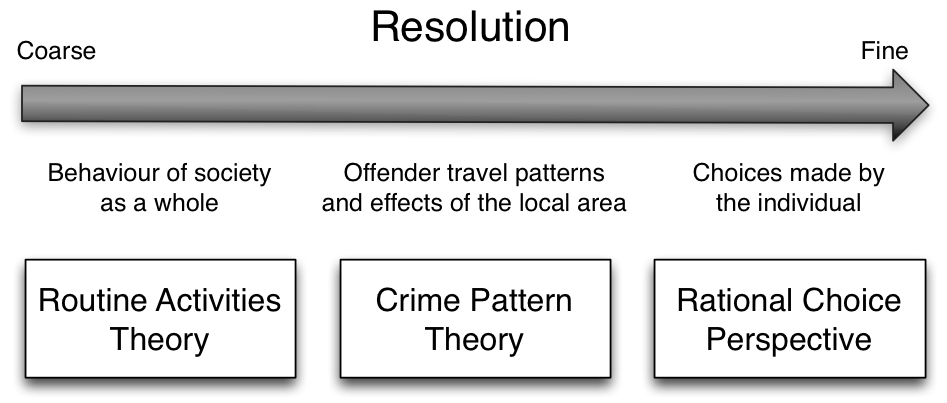
Rational choice perspective (decision to offend)
Routine activity theory (how they move and encounter targets)
Geometric theory of crime (how they learn about their environment)
ABM Explanatory Example (Birks 2012)
Validation against stylized facts:
Spatial crime concentration (Nearest Neighbour Index)
Repeat victimisation (Gini coefficient)
Journey to crime curve (journey to crime curve)
Results:
All theories increase accuracy of the model
Rational choice had a lower influence than the others
Simple / abstract model:
Not directly applicable to practice
But simplicity allows authors to concentrate on theoretical mechanisms
Realistic backcloth might over-complicate model (Elffers and van Baal, 2008)
ABM Predictive Example
Predictive: exploring the real world
ABM to explore the impacts of real-world policies
Urban regeneration in Leeds
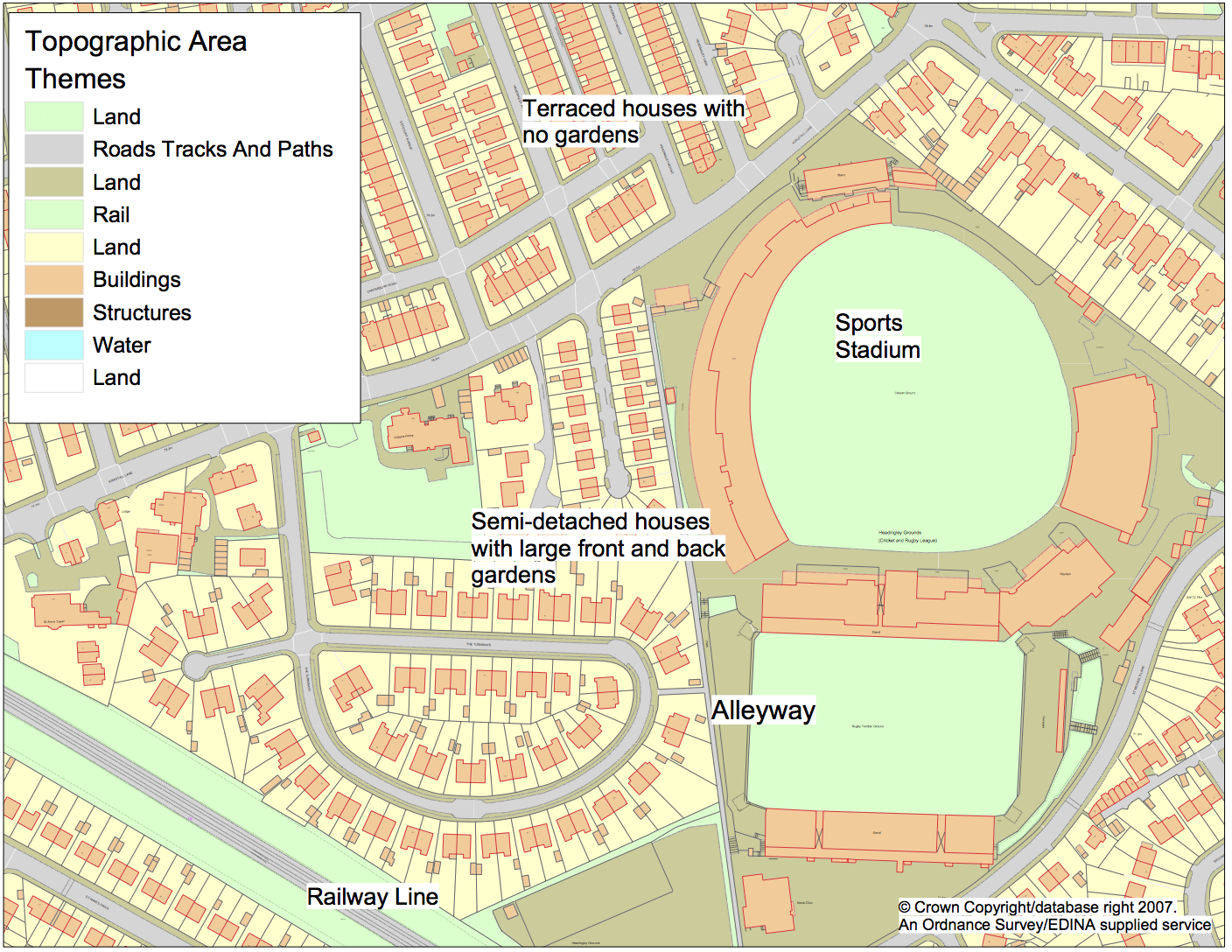



ABM Predictive Example
Awareness space test
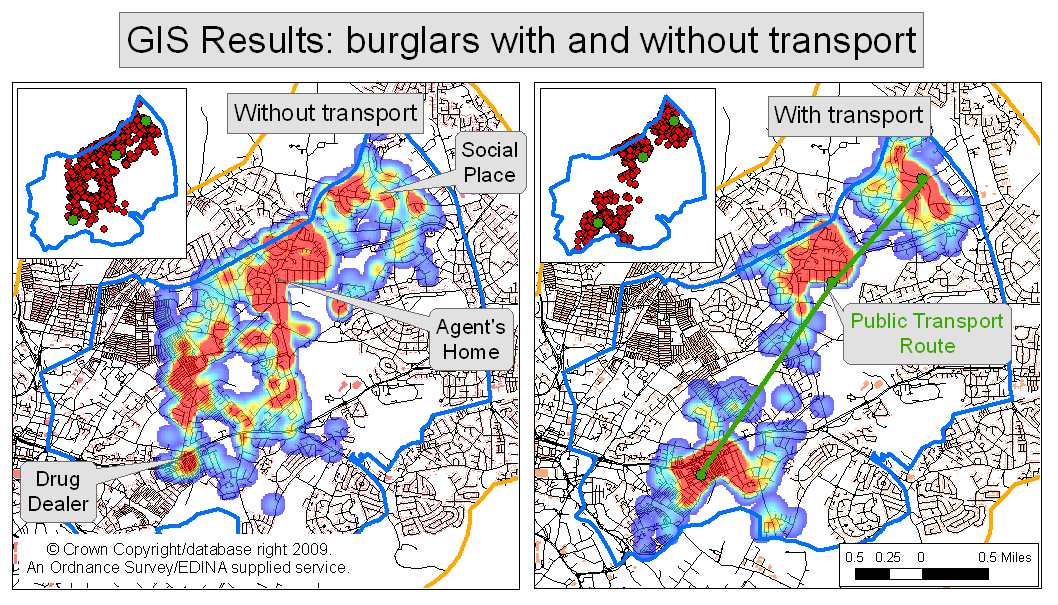
Did it work?
Aggregate results
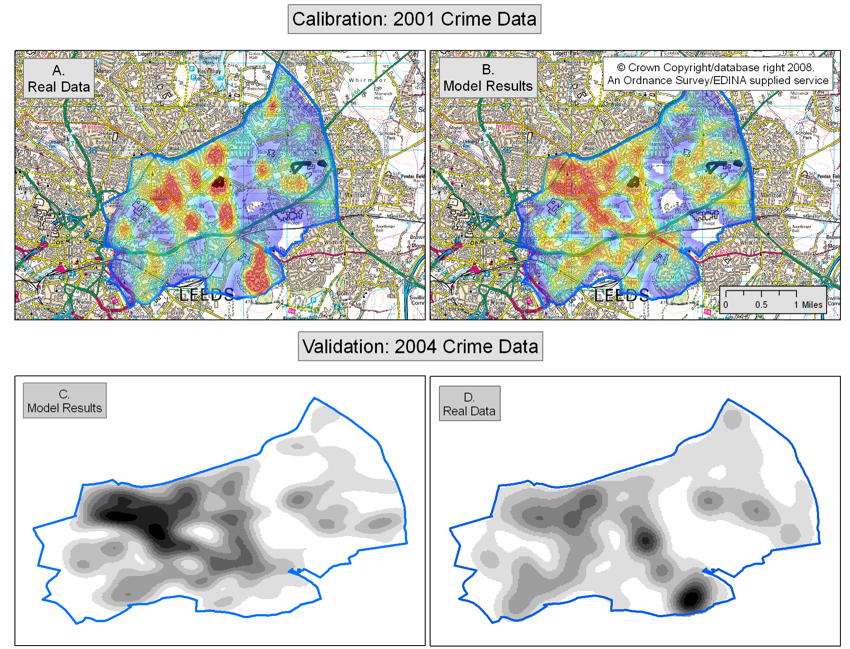
Did it work?
Halton Moor
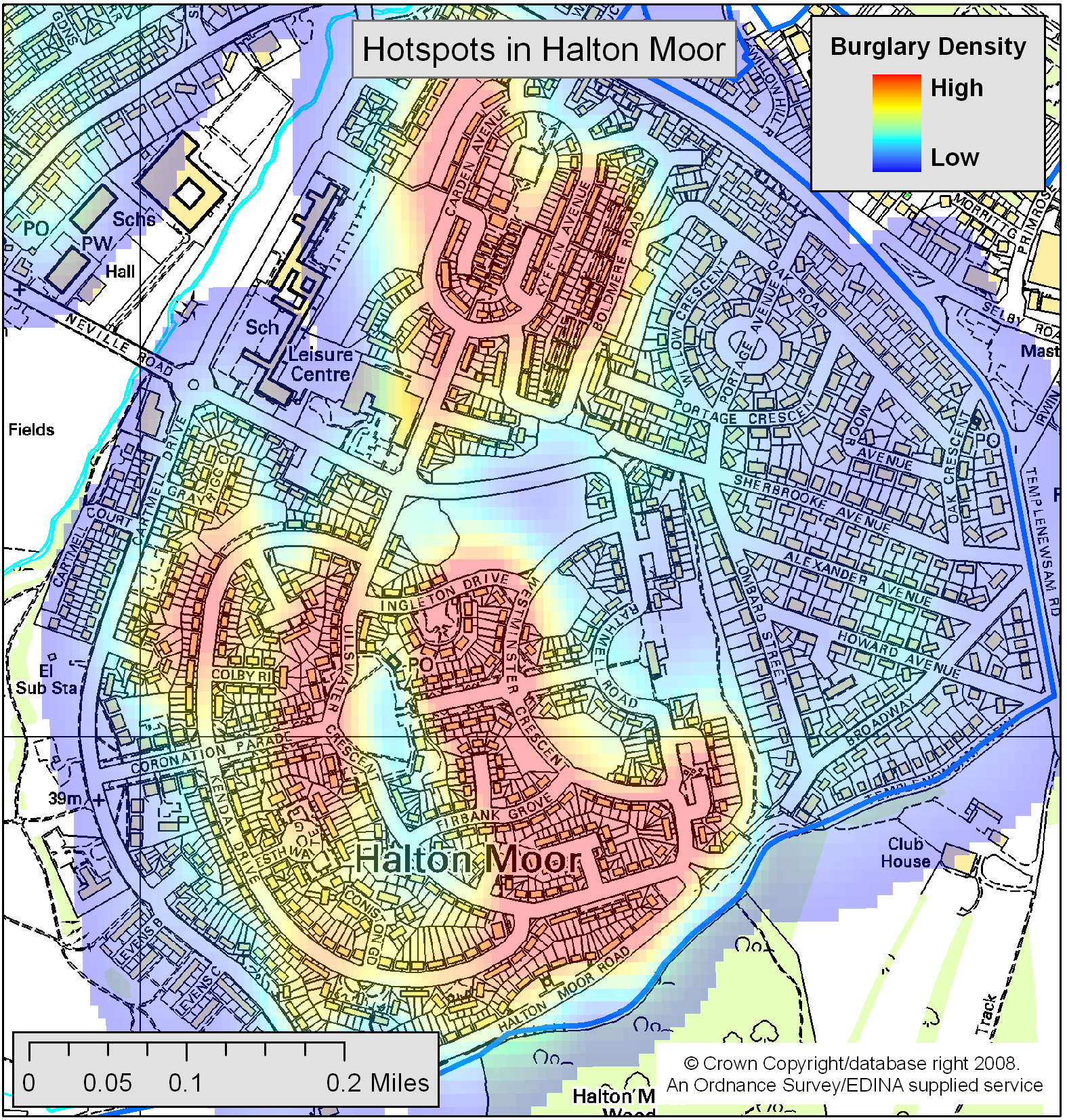
Did it work?
Journey to Crime

ABM Predictive Example
Scenario Results
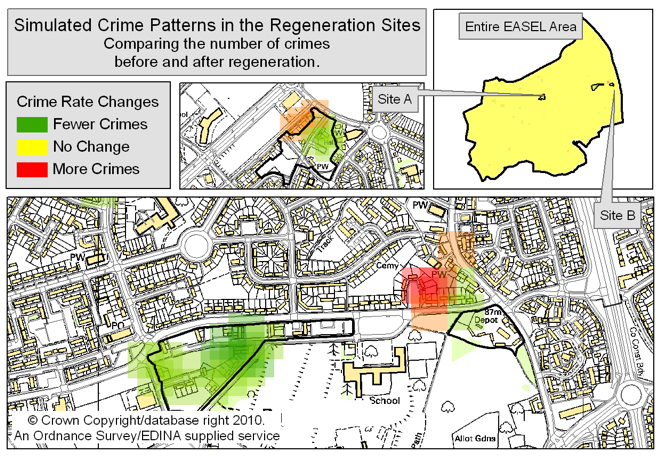
Part 2: Modelling Urban Dynamics
How many people are there in Trafalgar Square right now?
We need to better understand urban flows:
Crime – how many possible victims?
Pollution – who is being exposed? Where are the hotspots?
Economy – can we attract more people to our city centre?
Health - can we encourage more active travel?
Smart cities and the data deluge
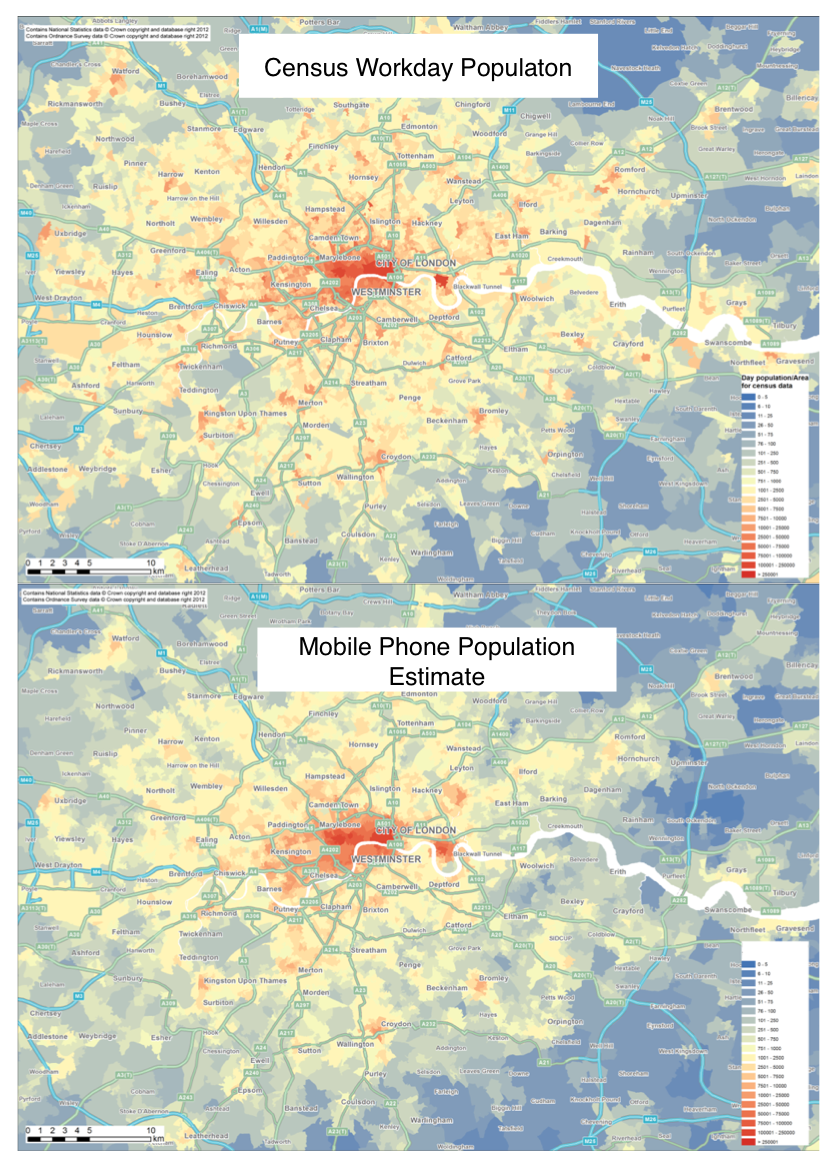
Abundance of data about individuals and their environment
"Big data revolution" (Mayer-Schonberger and Cukier, 2013)
"Data deluge" (Kitchin, 2013a)
Smart cities
cities that "are increasingly composed of and monitored by pervasive and ubiquitous computing" (Kitchin, 2013a)
Large and growing literature
(A few) Challenges with ABM
Parameterising
Creating rule sets
Representing behaviour accurately
Calibrating and validating
Getting the right amount of detail
Reproducibility
Uncertainty
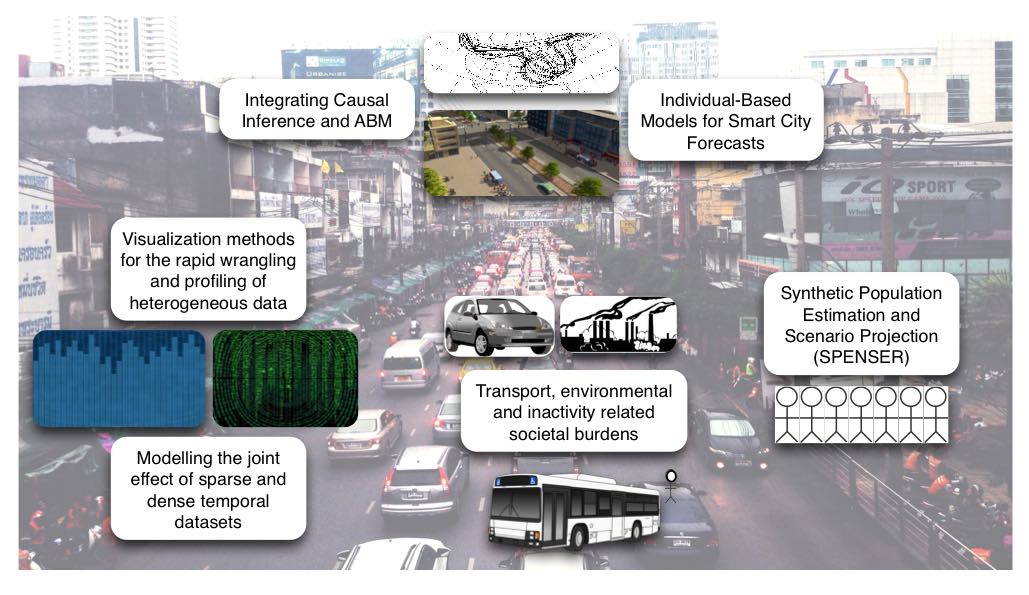
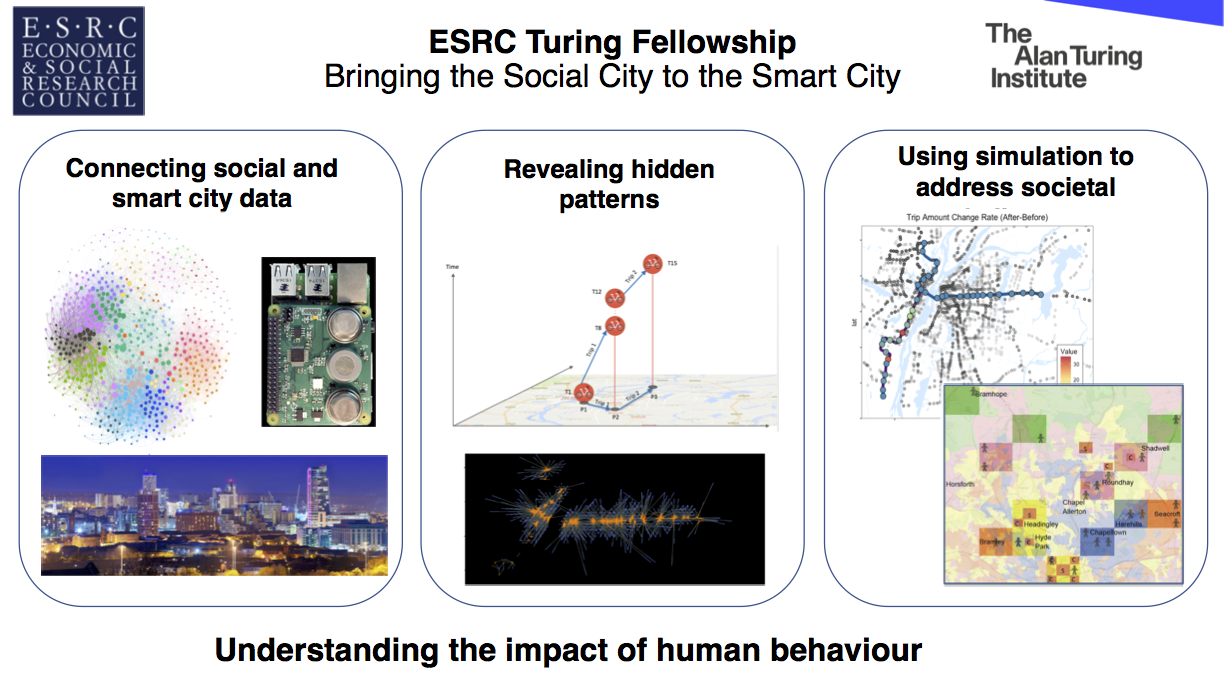
Agent-Based Urban Modelling

New project: Data Assimilation for Agent-Based Models (dust)
5-year research project (€1.5M)
Funded by the European Research Council (Starting Grant)
Started in January
Main aim: create new methods for dynamically assimilating data into agent-based models.
Quesions & Discussion
Thoughts / comments
How would you model these behaviours?